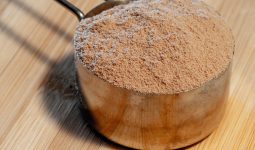According to research, more than two-thirds of Americans don’t eat fruits or vegetables at least twice a day, and most don’t follow recommended dietary guidelines.
Worldwide, more than 2 billion people lack micronutrients because they don’t get enough essential daily vitamins and minerals. Many Americans, especially children, also do not meet their vitamin and mineral needs.
Haven said, what are fortified foods, and why is it essential in our daily diet? In the United States, for example, as in most countries around the world, fortified foods were introduced as a systematic approach to correcting identified nutritional deficiencies in the population.
Its goal was to help increase vitamin and mineral intake with foods adults and children already eat, such as grain and milk.
In this article, we will discuss further what are fortified foods, why foods are fortified, lists of fortified foods, benefits and downsides of fortified foods.
What are Fortified Foods?
If you just ate your favorite bowl of cereal for breakfast or a delicious sandwich for lunch, chances are you ate something fortified.
Breakfast cereals can be fortified with vitamins and minerals, and whole milk, whether dairy or plant-based, can contain extra calcium or nutrients like vitamins A or D.
And in your sandwich, thiamin (vitamin B1), folic acid, and iodized salt will most likely have been added to your bread, and vitamin D to your margarine.
Fortified foods are those that contain artificially added nutrients that are not found naturally. These nutrients include selected essential vitamins, minerals, or other micronutrients that are naturally lacking in this food product. These foods are intended to improve nutrition and provide health benefits.
Micronutrients are essential for many important bodily functions. Your body cannot produce its own micronutrients.
They must come from your diet. Food manufacturers add micronutrients to their products during production.
They create chemicals that contain vitamins and minerals. When added to food, these chemicals have no noticeable taste, texture, or odor.
Some foods which naturally contain certain micronutrients but lose them during cooking or storage. Food enrichment will occur when the food manufacturers add these nutrients back. Unlike enriched foods, fortified foods do not naturally contain any of these nutrients.
Fortified foods were then initially produced in response to addressing widespread deficiencies of certain nutrients in the population.
An example is the introduction of iodized salt in the United States in the 1920s due to the high prevalence of goiter.
This program started after several leading national health organizations at the time recommended this step based on new research showing that sodium iodide prevented goiter.
Another early attempt at fortification was followed in 1933 with the fortification of milk with vitamin D based on recommendations from similar health groups.
Adding vitamin D to milk was originally done by irradiating milk or feeding cows irradiated yeast.
This technique was later superseded in the 1940s by the simpler and more effective method of adding vitamin D concentrate to milk, as practiced today.
These extra nutrients can help meet your nutrient needs and prevent nutrient deficiencies. Consumption of fortified foods should be not instead of but in addition to a balanced diet that includes a variety of naturally nutritious foods.
Why are Foods Fortified?
Food fortification is not a new trend. Now that you know what are fortified foods, you should want to know the reason for this trend.
The process of food fortification actually dates back 100 years, and the success of iodine in salt made food fortification more common, especially to address vitamin and mineral deficiencies during World War I and World War II.
According to the World Health Organization (WHO), micronutrient deficiencies are a major contributor to the global burden of disease.
Micronutrient deficiencies not only cause direct damage to human health through acute deficiency symptoms but can also be responsible for long-term problems such as metabolic disorders, impaired child development, or decreased ability of the immune system to fight infections.
Today, fortified foods have continued to play an important role in filling gaps in vitamin deficiencies, especially for children, pregnant or breastfeeding women, people on calorie-restricted diets, or perhaps even people following a vegetarian or vegan diet if not well planned.
Fortified food “analogs” (such as plant-based milk or meat alternatives) with key vitamins and minerals more closely match the nutrient profile of their traditional food counterparts and also help to ensure that consumers do not lack important nutrients due to their preferences or the need for this food.
Foods are also fortified to replace vitamins and minerals that may have been lost during processing, handling, or storage.
List of Fortified Foods
Now that we know what are fortified foods, it is only necessary to be curious about the common examples of fortified foods. Before that, let’s list the common nutrients that are commonly added to them.
Nutrients added to fortified foods include:
- Folic acid
- vitamin A
- vitamin B6
- Vitamin B12
- Calcium
- Vitamin D
- Vitamin E
- The iron
- Iodine
Common Fortified Foods
The list of fortified foods can be long and ever-growing, and the number of popular nutrient-fortified food products continues to grow as demand increases. Still, below we’ve listed common fortified foods that you can find in your daily diet.
Refined Grains With Added Vitamin B and Iron
Since the middle of the 1950s, most grains and grain products have been fortified with vitamin B-1 or thiamin, vitamin B-2 or Riboflavin, vitamin B-3 or niacin, and iron. They have also been fortified with folic acid since 1998.
Their products include bread, cornmeal, flour, rice, and pasta. Folic acid is an essential vitamin that helps to prevent congenital disabilities of the neural tube.
Milk Fortified With Vitamin D
Milk is usually not a natural source of vitamin D, but fortified milk is the main source of vitamin D in the United States. Vitamin D is an essential nutrient that helps your body absorb and use calcium, which is essential for strong bones.
Other foods usually fortified with vitamin D include milk substitutes like fortified soy milk, fortified orange juice, and fortified breakfast cereals. Fortified milk also contains vitamin A.
Salt Containing Iodine
As mentioned above on what are fortified foods, fortified salt contains iodine, an essential nutrient to prevent goiter, cognitive impairment, and developmental disabilities.
Iodine deficiency has been linked to being a leading cause of preventable brain damage worldwide, and salt iodization helps prevent widespread deficiency in areas where the soil is not rich in iodine or where seafood consumption is not as high.
Salt that does not contain iodine must be labeled as such, but salt in processed foods does not contain iodine.
Many Other Common Fortified Foods
Some margarine and other butter substitutes contain sterols that help lower cholesterol.
Manufacturers can add calcium to orange juice and alternatives such as soy, almond, and rice milk.
Puddings and other baby snacks also often contain calcium. Cereals like breakfast cereals are often fortified with additional vitamins and minerals, such as vitamin B-12 and calcium.
Baby formulas can also contain iron, vitamin K, and omega-3 fatty acids.
Health Benefits of Fortified Foods
Benefits of fortified foods include:
They are Inexpensive
Foods high in certain nutrients can be expensive. For example, fish is an excellent source of omega-3 fatty acids, but some people may find it too expensive to buy regularly.
Therefore, eggs, milk, and other products can be fortified with omega-3 fatty acids. These products usually cost less and still have similar nutritional value.
Prevent Nutrition-related Illnesses
When you don’t get enough nutrients, you may have a deficiency. Fortified foods have helped reduce rates of diseases linked to nutrient deficiencies, such as rickets.
However, many people are still nutrient deficient, which is when you eat enough nutrients to avoid complete deficiency. Maybe you’re still not eating as much as experts recommend.
Insufficient nutrients can cause health issues such as:
- Iron deficiency anemia
- Type 2 diabetes
- Osteoporosis (weak bones)
- Fatigue
They are Helpful During Pregnancy
Pregnant women need more food than usual because they feed a growing baby. Even when you eat more, you may not be getting enough vitamins.
Fortified foods can fill the void. For example, folic acid is added to many fortified products. Consuming enough folic acid in your diet during pregnancy reduces the risk of congenital disabilities.
Protect the Elderly
As you age, your body tends to absorb fewer vitamins and minerals. Fortified foods can help maintain healthy levels of micronutrients, which can strengthen bones, improve digestion, and prevent heart problems.
They Help Children Grow
Children are more at risk of nutritional deficiencies than adults. Their bodies need enough vitamins and minerals to support growth. Fortified foods, along with a balanced diet, can improve children’s nutrition.
They Meet Dietary Needs
Some essential nutrients are only available in animal products or foods that cause allergic reactions. Fortified foods help you get enough nutrients if you are vegetarian, lactose intolerant, or have other dietary needs.
Limits Of Fortified Foods
Knowing what fortified foods are is not enough. These foods have many benefits, but that doesn’t mean they don’t have their downsides, too. They have limitations in their ability to improve and protect your health.
It is Added to Junk Food
Just because a food product is fortified does not mean it is safe. Fortified foods are often highly processed. They are often high in sugar, fat, sodium, and other ingredients that can lead to issues like obesity.
Risk of Vitamin Overdose
You may be consuming too many vitamins and minerals in your diet, which can be harmful. This is more likely when you take dietary supplements like pills than when you eat fortified foods.
Check product labels. Avoid foods that contain more than 200 times the recommended daily amount of any nutrient.








